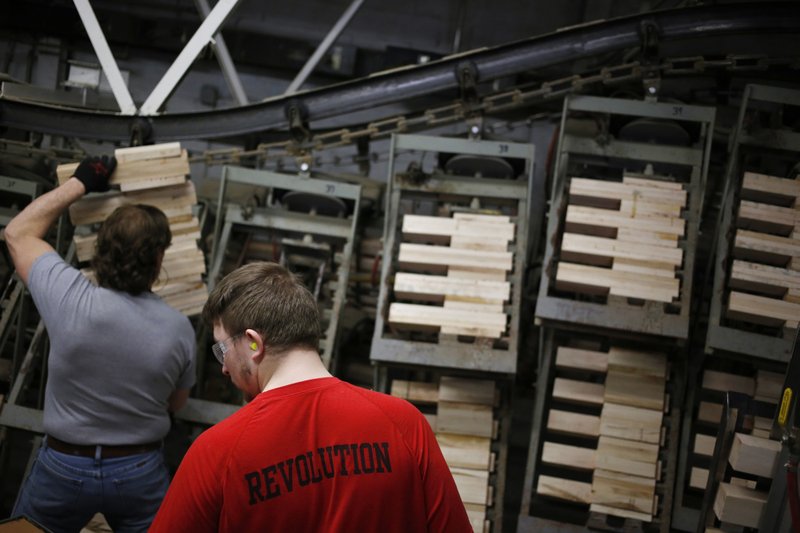A gauge of U.S. factories topped estimates in March, rising from a two-year low on strength in employment and orders and signaling stabilization after a rocky few months, according to a report Monday.
The Institute for Supply Management index rose to 55.3 from 54.2 as three of five main components increased. The result topped estimates in a Bloomberg survey calling for a rise to 54.5 and remained above the 50 level that indicates expansion. Measures of deliveries and inventories decreased.
Readings above 50 point toward an expansion in manufacturing. The sector has been reporting growth for 31 months.
The reassuring reading may signal the worst is over after months of mounting pressure in manufacturing sent the gauge tumbling from a 14-year high in August. The bounce brought the factory gauge back up toward its 12-month average.
Out of the 18 sectors surveyed for the report, 16 reported growth, including transportation equipment and primary metals. Only the apparel and paper product sectors reported declines. The food and beverage sector performed the strongest in March.
The biggest contributor to the better March reading came from employment, which snapped a three-month slide with the biggest gain in three years. That's a sign of labor-market resilience before Friday's March jobs report, which is forecast to show hiring rebounded from a weak February.
"The primary driver here was employment," said Timothy Fiore, chairman of the institute's manufacturing business survey committee. "People are hiring to make sure they have the outputs needed to meet the demand in April, May and June."
While the Federal Reserve has pledged patience on interest rates, factories still face hurdles as the economy cools and the global outlook dims. Figures released last week showed fourth-quarter growth cooled more than initially reported, and economists project the first-quarter expansion pace slowed to 1.5 percent, the weakest in three years.
Readings for export orders and imports both fell to two-year lows, the latest evidence that the extended trade war with China is taking more of a toll on economic growth.
An index of prices paid rebounded from a three-year low and climbed back above 50, a signal costs are ticking up again as crude-oil prices extend their rally from December lows.
An index of supplier deliveries fell to a two-year low of 54.2. Readings below 50 indicate faster deliveries, while those above 50 signal they are slowing.
The customer inventories index rebounded from an eight-year low to 42.7, remaining at a level that indicates potential for production growth.
The order backlogs gauge fell to just above the 50 level.
In a separate report, U.S. construction spending rose a solid 1 percent in February, led by a strong gain in spending on government projects, which hit an all-time high.
The February increase followed an even larger 2.5 percent gain in January and a slight 0.2 percent rise in December, the Commerce Department reported Monday. The gains pushed total construction to a seasonally adjusted annual rate of $1.32 trillion, the highest level since May.
Residential construction was up 0.7 percent. Government construction jumped 3.8 percent to $303 billion, the highest level on record.
Weakness in home building has been a drag on overall growth, but analysts believe housing construction should rebound this year, helped by lower mortgage rates after the signal by the Fed that it plans to hold rates steady this year.
Spending on private nonresidential projects dropped 0.5 percent in February, with office construction down 0.4 percent and the sector that includes shopping centers falling 0.8 percent. Spending on hotel and motel construction managed a small 0.1 percent gain.
The big increase in spending on government projects was led by an increase of 3.8 percent in state and local construction projects.
For all of 2018, construction spending rose 3.9 percent to a record high of $1.29 trillion. It marked the seventh annual increase after construction had fallen for five straight years starting in 2007 with the collapse of the housing bubble.
Information for this article was contributed by Jeff Kearns of Bloomberg News; and by Josh Boak and Martin Crutsinger of The Associated Press.
Business on 04/02/2019
